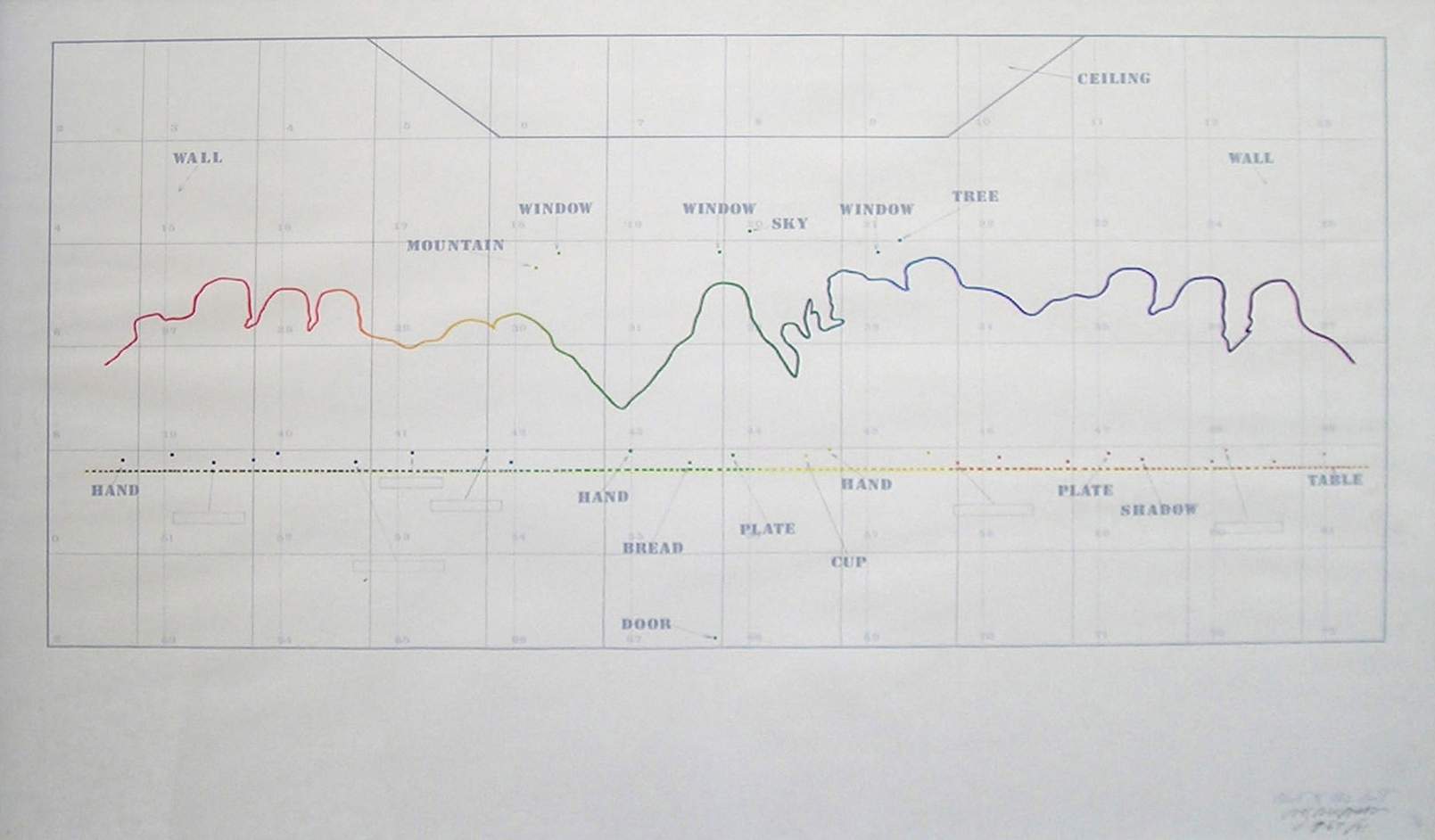From March 22 to April 30, 2022, Galleria Milano presents an exhibition of Shūsaku Arakawa (Nagoya, 1936 - New York, 2010), a Japanese artist and architect, an important of the international conceptual, whose research is aimed at mental mechanisms and the decoding of the world through philosophical categories. The exhibition, entitled Shūsaku Arakawa. The Color of Mind, is part of a path of recovery and philological research that Galleria Milano is pursuing on some of the artists it has worked with in the past, including Enzo Mari and Betty Danon. Two solo shows were dedicated to Arakawa in 1983 and 2005, the latter together with Madeline Gins.
Arakawa’s career path developed between Japan and, above all, the United States. Born in Nagoya in 1936, he moved to Tokyo to study at the Faculty of Art, where he was part of the neo-dada milieu. He immediately embraced an anti-artistic tendency and began working on diagrammatic elements that he would later develop. In 1961 he left Japan for New York: his first meeting was with Marcel Duchamp, who became his mentor and introduced him to the lively artistic environment, where he would associate with John Cage, Jasper Johns and Robert Rauschenberg, among others. The following year, in 1962, he met what would become his partner in profession and life, Madeline Gins; in the process he developed a language of words, signs, shadows, lines, simple morphemes and gradations of color. At first, silhouettes and everyday objects predominate, and then become increasingly “spatial constructions that could be called ’hyper-cubic’ or tetradimensional” (Gillo Dorfles).
On display at Galleria Milano are canvases, papers and graphics from the 1960s and early 1970s, in which the artist investigates the relationship between space and time in a synthesis that he defines as the philosophy of emptiness, or blank. It was precisely during this period that he published the first edition (in German) of the seminal volume The Mechan ism of Meaning (1971), produced together with Gins: his primary goal is to understand, precisely, the “mechanism of meaning” with an interpretive, rather than an analytical, approach. His canvases, large but never homogeneous, are full of “focal points,” thickenings of arrows, tubes, rotating elements, letters and words as mistake, to represent the continuous short-circuit of signification in which man is stuck. Also frequent is bottomless, a kind of quadrangular pyramid that, in the white of the canvas, appears as a mysterious object, subverted and suspended. All around are the “blobs of blank, of non-square, which interrupt the universe of the fabric-square and give us the feeling that the meaning and form of everything else floats around these gaps of existence,” in the words of Italo Calvino, who appreciated his art and had the opportunity to discuss it with him in several meetings, between Paris and New York. For Calvino, Arakawa’s purely intellectual painting makes visible “the color of the mind” - hence the title of the exhibition: “the mind has a color that we can never see because there is always some other color that passes through our minds and overlaps our gaze. [...] The mind can have no other color than that of Arakawa’s paintings.”
His two filmic works, Why Not (A Serenade of Eschatological Ecology), 1970 and For Example (A Critique of Never), 1971, the latter, in the Italian version, with voice over by Vincenzo Agnetti, will also be shown in the exhibition. ShÅ«saku Arakawa (Nagoya, July 6, 1936 - Manhattan, May 18, 2010) has exhibited in numerous museums, galleries and institutions, including: Museum of Modern Art, Tokyo, 1958; MoMA, New York, 1966; XXXV Venice Biennale, 1970; Neue National Galerie, Berlin, 1972; Städtische Kunsthalle Düsseldorf, 1977; Solomon R. Guggenheim Museum, New York in 1997; Gagosian Gallery, New York, 2017.
The exhibition opens Tuesday through Saturday from 10 a.m. to 1:30 p.m. and 3 p.m. to 7 p.m.
Image: Shūsaku Arakawa, Next to the Last (1967-1971; silkscreen print in 75 copies). Courtesy Galleria Milano
 |
| An exhibition in Milan dedicated to Shūsaku Arakawa, an important figure in international conceptual art |
Warning: the translation into English of the original Italian article was created using automatic tools. We undertake to review all articles, but we do not guarantee the total absence of inaccuracies in the translation due to the program. You can find the original by clicking on the ITA button. If you find any mistake,please contact us.